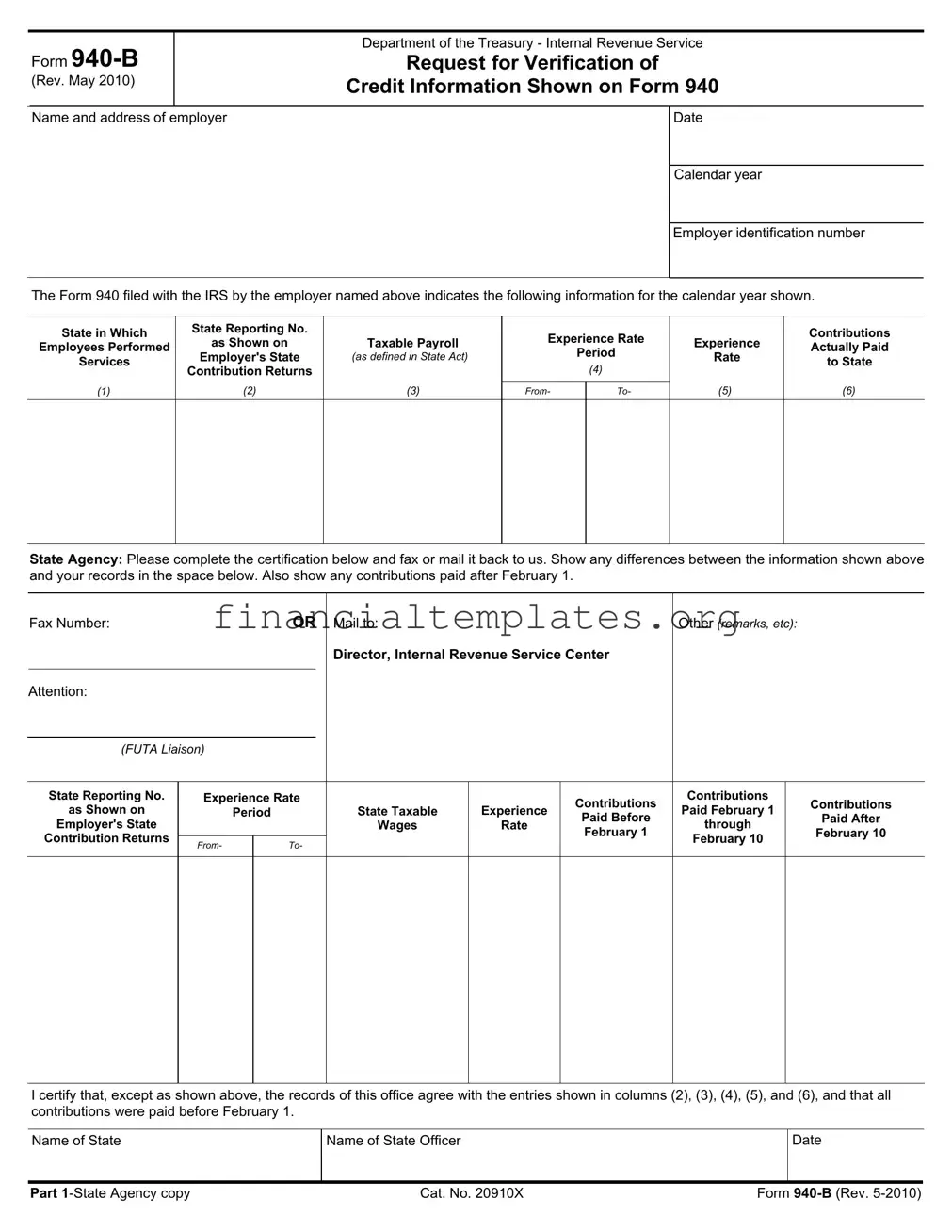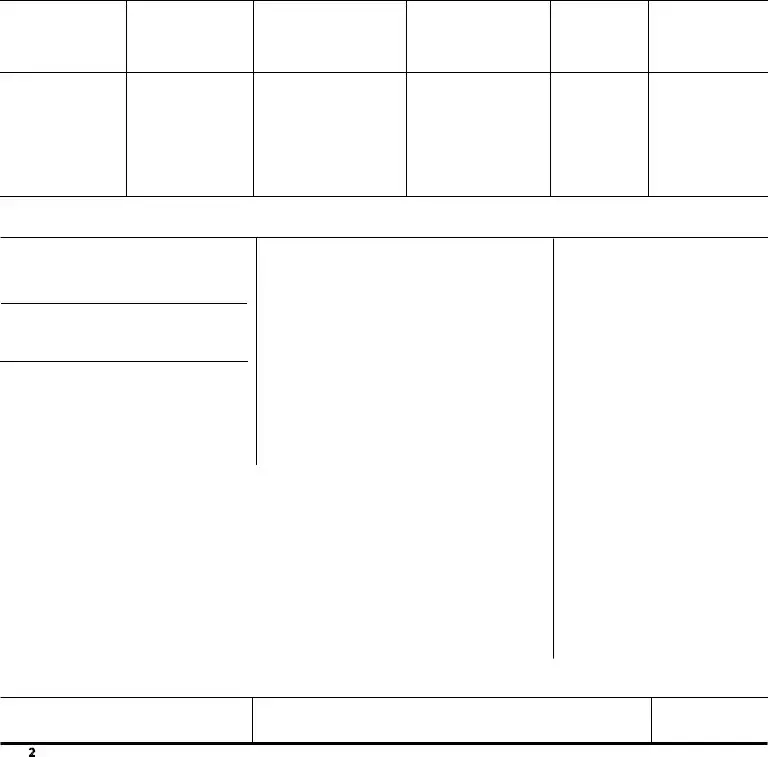The IRS Form 941, Employer's Quarterly Federal Tax Return, shares similarities with the IRS 940-B form in that both deal with employment taxes, though they serve different functions. Form 941 is used to report wages paid, the amount of income tax withheld from employees, and both employee and employer shares of social security and Medicare taxes on a quarterly basis. Like Form 940-B, which requests verification of credit information shown on Form 940, Form 941 involves detailed reporting to the IRS to ensure compliance with tax obligations related to employment.
Form W-2, Wage and Tax Statement, is another document closely related to the IRS 940-B form. While Form 940-B is used to verify credit information for unemployment taxes, Form W-2 summarizes an employee's annual wages and the amount of taxes withheld from their paycheck. Both forms are crucial in the reconciliation of an employee's tax obligations; however, Form W-2 is more directly related to the employee, whereas Form 940-B and the corresponding Form 940 are primarily employer-focused documents.
The IRS Form 944, Employer’s Annual Federal Tax Return, is akin to the IRS 940-B as both are designed for businesses with employment tax obligations. Form 944 allows smaller employers to file annually instead of quarterly, underscoring the IRS's flexibility in accommodating various business sizes and needs. This form, similar to the 940-B, underscores the necessity for accurate reporting of taxes related to employment. Form 944, like Form 940 and its verification counterpart 940-B, ensures that employers fulfill their tax liabilities accurately and on time.
Lastly, Form W-3, Transmittal of Wage and Tax Statements, complements the functionality of the IRS 940-B form by summarizing the information presented on Form W-2 and transmitting it to the Social Security Administration (SSA). While Form 940-B focuses on verifying credit information for unemployment purposes with the IRS, Form W-3, in conjunction with Form W-2, facilitates a comprehensive report of wages and tax withholdings to the SSA. Both forms are vital components of the annual reporting responsibilities of employers, ensuring accurate documentation and compliance with tax laws.


